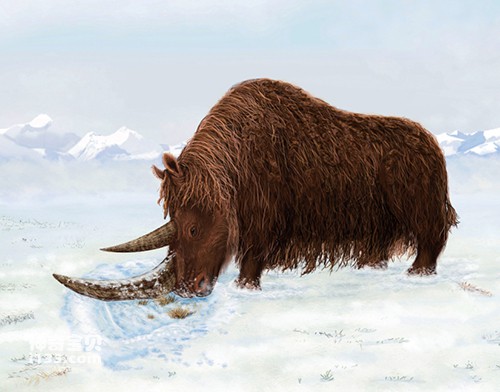The 3.7 million-year-old woolly rhinoceros discovered in the high-altitude Zanda Basin in the Ali region of Tibet, my country, is the most primitive woolly rhinoceros discovered so far. The discovery and study of the fossils of the woolly rhinoceros and other cold-adapted animals that coexisted with it proved that the Tibetan Plateau had become the initial evolutionary center of ice age animals in the Pliocene period before the Quaternary Ice Age, thus overturning the theory that they originated from Arctic Circle Hypothesis. The results were published in the American "Science" magazine on September 2, 2011.

Tibetan woolly rhinoceros recovery map (drawn by Julie Naylor)

Skull and mandible specimens of Tibetan woolly rhinoceros

Zada’s snowy mountains and earth forests
The high-cold and hypoxic Qinghai-Tibet Plateau is often described as a forbidden zone for life, but the unyielding expedition team defied all difficulties. Our team has been wading through mountains and rivers in the Cenozoic basin in the hinterland of the plateau for more than 10 years, and the traces of ancient life have gradually become clearer. The Quaternary Ice Age is a major climatic and environmental evolution event that scientists have devoted their efforts to study. Where the animals that adapted to the ice and snow environment came from during this period has always been a scientific mystery. They are speculated to have originated in the Arctic Circle and then gradually migrated south as the ice age intensified, which seems to be a very reasonable explanation. However, our findings in the Zanda Basin prove that the "polar origin" hypothesis of glacial animals is actually the opposite. Their migration and diffusion routes were misjudged, and the Tibetan Plateau is their real cradle.
animal tags:
We created this article in conjunction with AI technology, then made sure it was fact-checked and edited by a Animals Top editor.